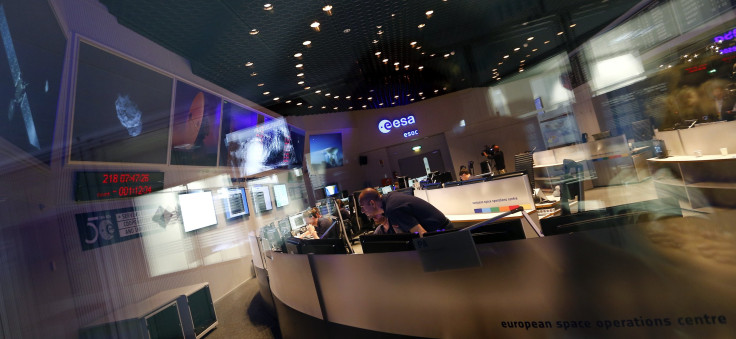Comet Lander Philae Wakes Up: What's Next? It's Speeding Toward Sun

The comet lander Philae -- parked on the comet 67P/Churyumov-Gerasimenko -- awoke from its hibernation that began last November, shooting signals back to Earth on Saturday. Its next stop will be a very hot destination, as its host comet is set to reach its closest point to the sun in August.
The European Space Agency posted a statement Sunday announcing the first-of-its-kind lander, part of the history-making Rosetta mission, sent signals for about 85 seconds to its command center. It was the first contact since November, and Philae is apparently in good condition after its long shutdown.
"Philae is doing very well: It has an operating temperature of -35ºC and has 24 Watts available," DLR Philae Project Manager Dr. Stephan Ulamec said in the statement. "The lander is ready for operations."
Incredible news! My lander Philae is awake! http://t.co/VtzAQHx4zT pic.twitter.com/SZqnsnNpUZ
— ESA Rosetta Mission (@ESA_Rosetta) June 14, 2015Hello Earth! Can you hear me? #WakeUpPhilae
— Philae Lander (@Philae2014) June 14, 2015Philae, which carried out the first-ever comet landing, also passed along historical data indicating it previously had been awake but was unable to contact the command center. The lander operated for 60 hours on the comet in November before going into hibernation. The Rosetta probe, carrying the lander, took about 10 years to reach the comet, and the washing-machine-sized Philae made history as it bounced onto the surface. Now 67P/Churyumov-Gerasimenko is passing closer to the sun, which reportedly boosted Philae's solar panels to life.
On Aug. 13 the comet will reach its closest point to the sun -- or perihelion -- which it last passed through in 2002, according to the European Space Agency's website. The site also said it was unclear how long the lander would operate, and that the comet's surface might become too hot in March -- a time-frame long-passed.
With the increased solar energy, scientists now hope the lander will gain enough power to carry out full-blown experiments, hopefully drilling into the surface of the comet to study its chemical make-up, reported the BBC. The lander previously discovered 67P/Churyumov-Gerasimenko was not magnetized, which provided key insight into the early stages of formation for bodies like comets or planets.
The Rosetta mission is expected to end in December 2015, but may be granted a six-month extension, provided there is enough fuel and funds, according to the European Space Agency site.
© Copyright IBTimes 2024. All rights reserved.






















